Hello all! Anybody miss me? Ah well, I did. But life happens and we cannot always have everything can we? Anyway I snatched a few moments and thought of marking my attendance with Cee’s Black and White Challenge which is Bricks or Stones. As I mentioned in my earlier Ivory post, I had a selection of statues and idols.
And here they are – hope you like 🙂
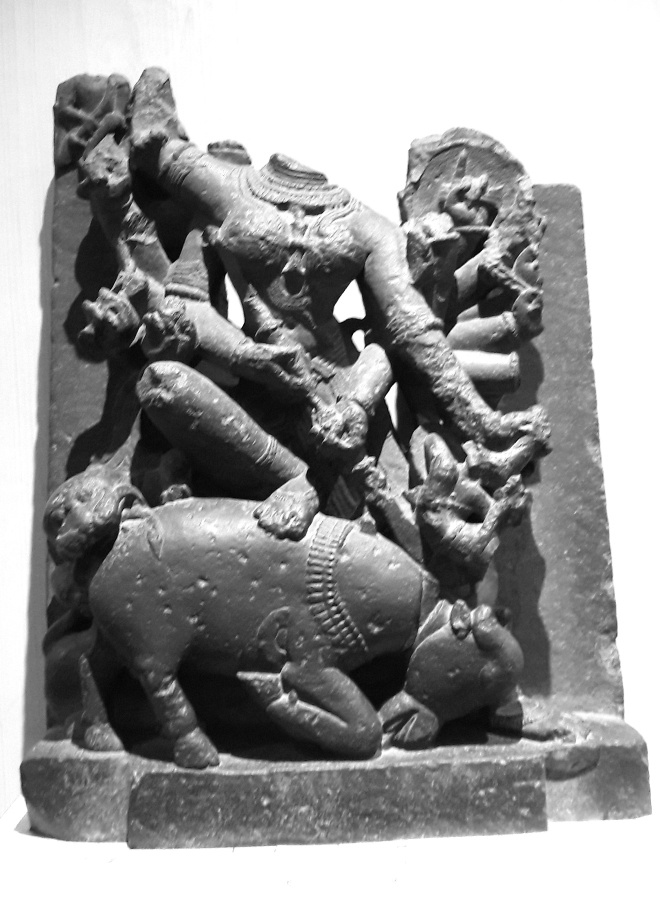 Devi Durga the vanquisher of Evil (Mahishasur) – her strength, her shakti (power) comes across despite the desecration does it not? Just like it does from the millions of women oppressed and abused all over the world.
Devi Durga the vanquisher of Evil (Mahishasur) – her strength, her shakti (power) comes across despite the desecration does it not? Just like it does from the millions of women oppressed and abused all over the world.
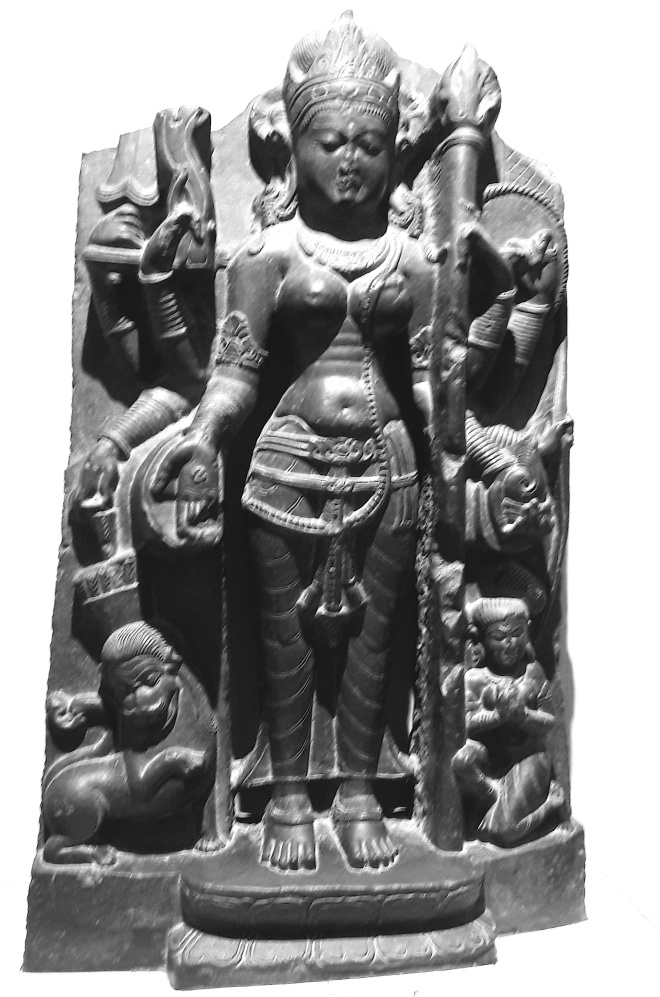
A stone idol of perhaps a warrior princess? These images are from the collection at Salar Jung Museum at Hyderabad, India.
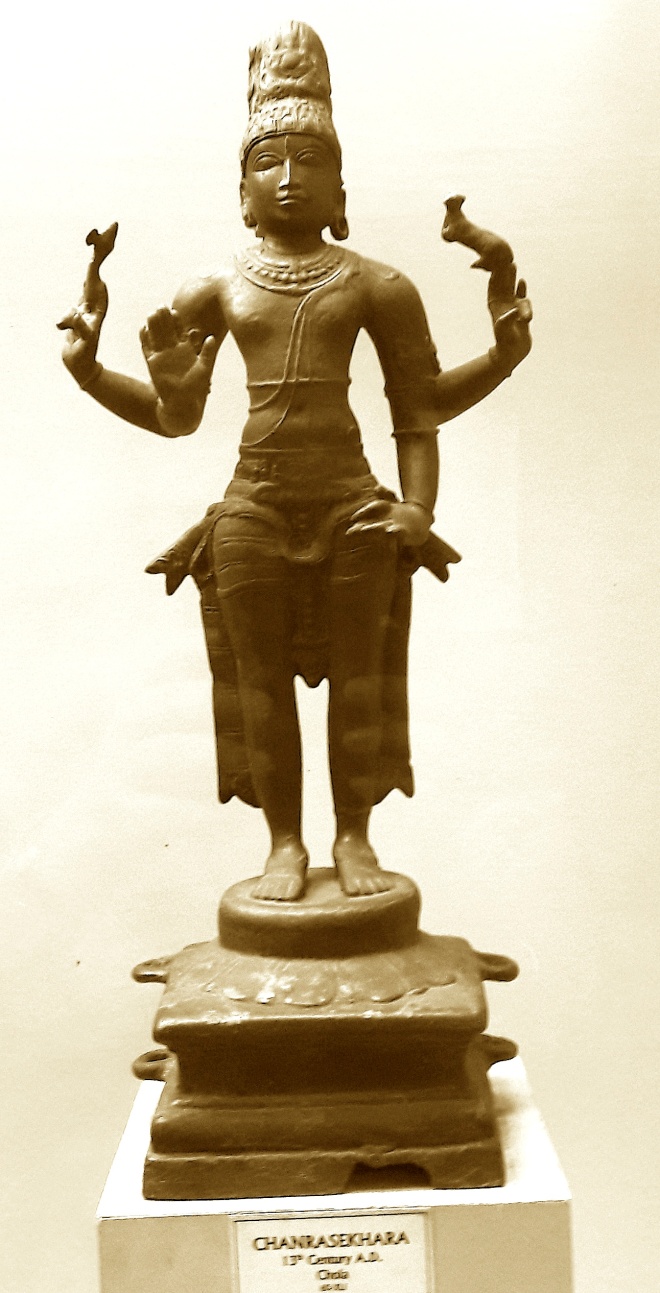
I had initially thought this idol to be of a king – Chandrasekhara. But four arms and the lack of any jewelry and simple attire made me rethink. He is Lord Shiva the one who wears the Moon on his matted locks. Apologies for the blurred picture.
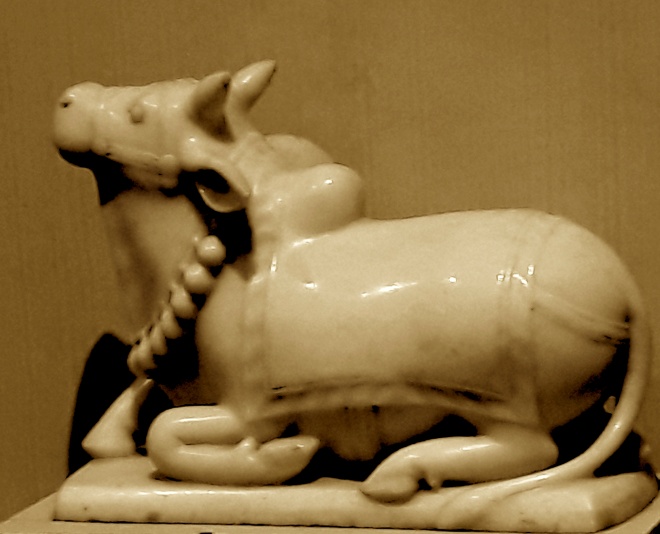
Nandi the sacred steed, constant companion and ardent devotee of Lord Shiva. It is said that even if the Lord does not hear your prayer anything that is whispered in Nandi’s ear is sure to reach the ears of the Lord Himself. The white color apparently symbolizes purity, righteousness and devotion. Although I am not so convinced for most of Nandi’s idols are in black stone.
 The more famous form of lord Shiva as Nataraja (the Lord of dance). Did you know that at CERN the European Council for Nuclear Research there is a statue of the Nataraja? As a plaque alongside the statue explains, the belief is that Lord Shiva danced the Universe into existence, motivates it, and will eventually extinguish it.
The more famous form of lord Shiva as Nataraja (the Lord of dance). Did you know that at CERN the European Council for Nuclear Research there is a statue of the Nataraja? As a plaque alongside the statue explains, the belief is that Lord Shiva danced the Universe into existence, motivates it, and will eventually extinguish it.
The Nataraja idol typically shows Shiva dancing in one of the dance poses, holding fire (as he is the God of destruction) in his left back hand, the front hand is raised in blessing, the front right hand with a wrapped snake that is in abhaya (fear not) mudra while pointing to a Sutra text, and the back hand holding a damru (a small drum like musical instrument) the sound of which created the universe. He is surrounded by a ring of flames, standing on a lotus pedestal, lifting his left leg (or in rare cases, the right leg) and balancing over a demon dwarf Apasmara (not a child!) who symbolizes ignorance.
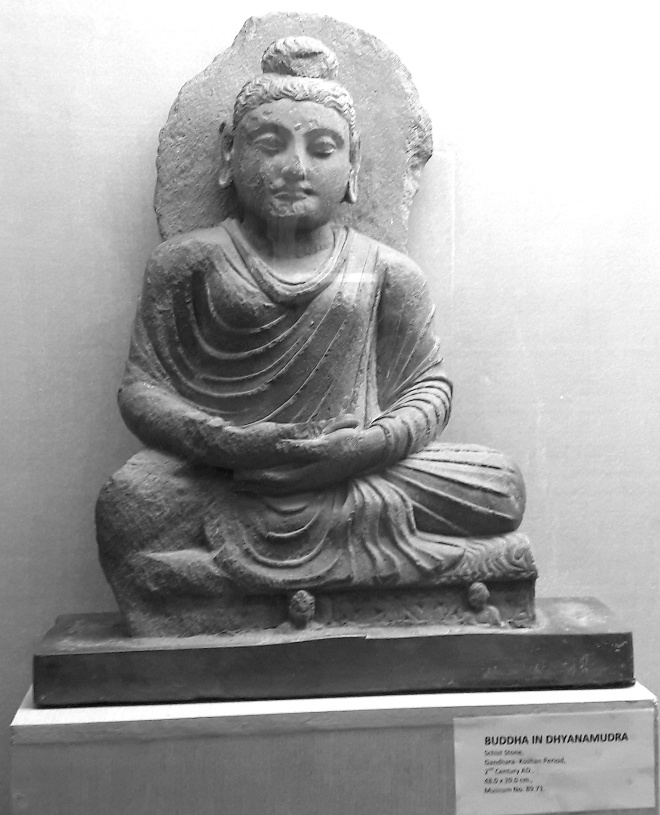 A second century stone idol of Lord Buddha.
A second century stone idol of Lord Buddha.
 The much loved and popular Lord Krishna. Again apologies (a blanket apology!) for the poor quality photos 😦
The much loved and popular Lord Krishna. Again apologies (a blanket apology!) for the poor quality photos 😦
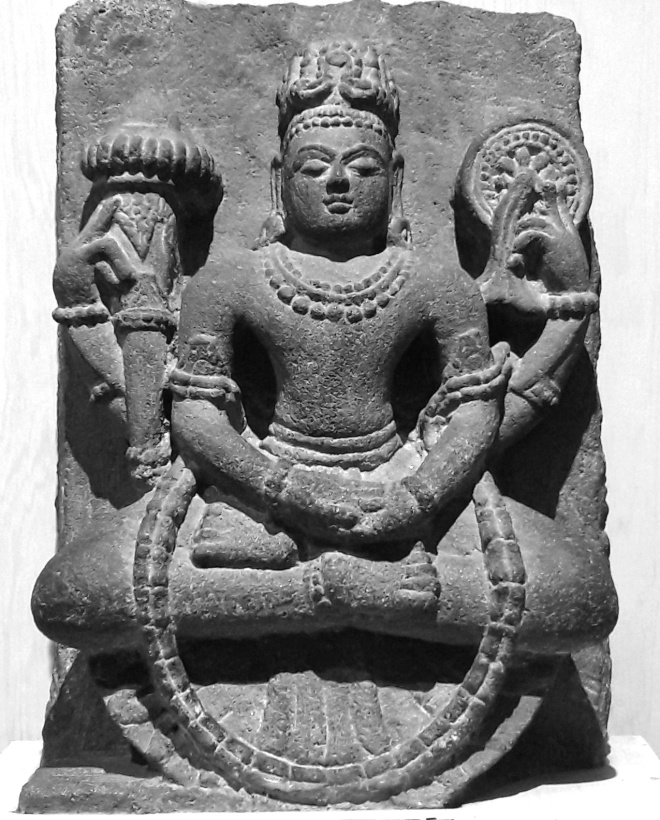
A 13th/14th Century AD sandstone idol of Lord Vishnu in Dhyanmudra (meditative pose)
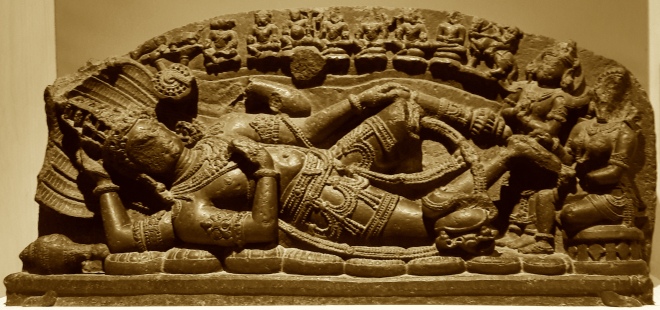 Another statue of Lord Vishnu the Preserver in the shayanmudra (reclining pose) with his ten avatars carved on top. At least that is what it looks like. The one on the horse (on the extreme right) is the Kalki avatar (destroyer of filth) foretold to appear to at the end of the kali yug the present epoch.
Another statue of Lord Vishnu the Preserver in the shayanmudra (reclining pose) with his ten avatars carved on top. At least that is what it looks like. The one on the horse (on the extreme right) is the Kalki avatar (destroyer of filth) foretold to appear to at the end of the kali yug the present epoch.
That’s it from me – at least in this post 😉 Do share your thoughts in the comment section – thank you for visiting.
Wonderful stone idols for this week. 😀
LikeLiked by 1 person
Thank you Cee😊
LikeLike
Beautiful statues !
LikeLiked by 1 person
Thanks Megs😊
LikeLiked by 1 person
Beautiful idols, im amazed to know the tits and bits of history you have tagged along.
LikeLiked by 1 person
Glad you liked😊
LikeLike
Why is the head on Durga missing? Liked the Dhyanamukt Vishnu the best
According to mythology, is Lord Shiva considered kshatriya or Brahmin?.. you have mentioned the statue labelled Chandreshekhara as that of Shiva and it has the sacred thread and so my doubt
LikeLiked by 1 person
Thousands of idols and temples were desecrated and destroyed by the invaders. I doubt if Shiva is considered to be either, He is beyond this isnt it? Very likely the sculptor or the patron made it in his own image with four hands 😀
LikeLiked by 1 person
“Did you know that at CERN the European Council for Nuclear Research there is a statue of the Nataraja? ” – so interesting! And I liked the collage of different images of stone, I think having one or two out of focus added to the overall feeling of variety in the sequence of images!
LikeLiked by 1 person
So nice of you to make me feel better😊🌹
LikeLiked by 1 person
It’s worth it!
LikeLiked by 1 person
It is so sad that Durga was decapitated . I sometimes wonder if it is some secret society which steats heads for some wierd cermony. Statue of natraj is my favourite. Thank you for explaining the meaning of all the positins of the hands as wel las the all the objects held in hands.
LikeLiked by 1 person
Glad you liked Ferdi 🙂
LikeLike